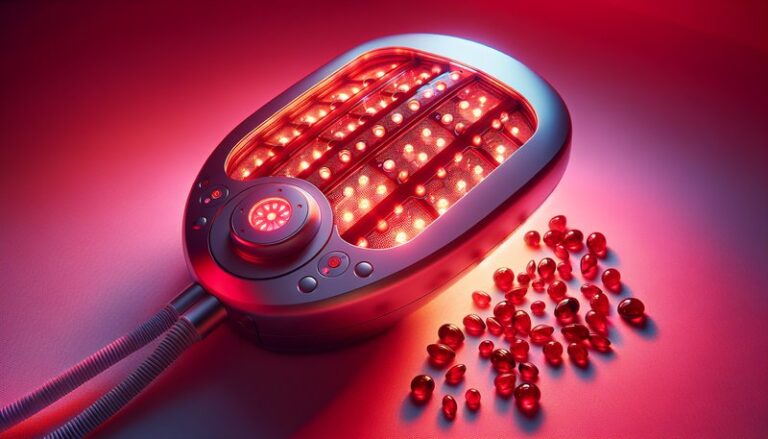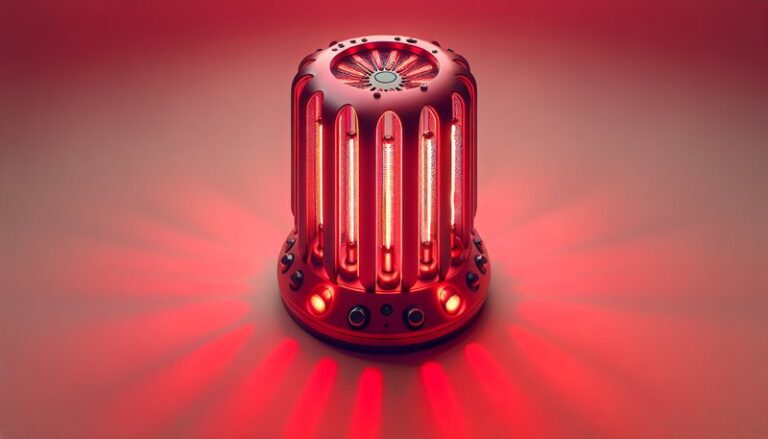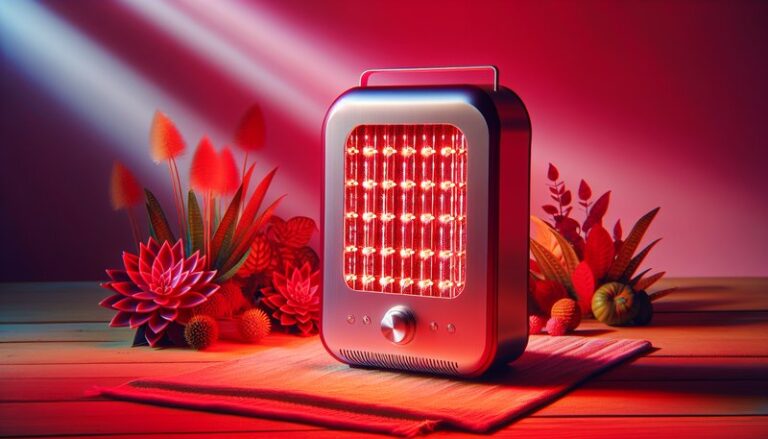Does Red Light Therapy Hurt?
Is red light therapy a painless path to healing, or is there a sting in the process?
Red light therapy has gained popularity as a non-invasive treatment for various conditions, but many people wonder if the procedure causes any discomfort. This article will explore the nature of red light therapy, its benefits, considerations to keep in mind before trying it, and whether it is indeed a pain-free process.
Key Takeaways
- Red light therapy is generally considered safe and non-invasive, with minimal discomfort reported by users.
- The therapy has numerous potential benefits, including pain relief, improved skin health, and expedited wound healing.
- While uncommon, some people may experience mild side effects, so it’s essential to consult a healthcare provider beforehand.
What is Red Light Therapy?
Red light therapy (RLT) is a form of low-level laser therapy that utilizes specific wavelengths of light—primarily in the red and near-infrared range—to stimulate cellular function. It is often used for its therapeutic effects on skin issues, muscle recovery, and pain relief, among other applications.
Red light therapy works by penetrating the skin to a depth where it can influence cellular processes. This light encourages the mitochondria, known as the powerhouse of the cell, to produce more adenosine triphosphate (ATP), which fuels cellular repair and regeneration.
RLT has applications in various fields, including dermatology, sports medicine, and physical therapy, contributing to its wide acceptance in clinical and cosmetic practices.
What are the Benefits of Red Light Therapy?
The benefits of red light therapy extend beyond mere relaxation. Here are some powerful advantages associated with its use.
Pain Relief
Red light therapy has shown considerable promise in reducing symptoms of pain and inflammation. Studies indicate that RLT can alleviate chronic neck and back pain, helping individuals manage their conditions without relying heavily on medications.
Skin Health Improvement
Numerous users report enhanced skin texture and tone following red light therapy sessions. The treatment can stimulate collagen production and reduce the appearance of scars and wrinkles, offering a non-surgical solution for those seeking to maintain youthful skin.
Accelerated Healing
RLT promotes faster healing of wounds and injuries, making it a popular choice for athletes and anyone recovering from surgery. The increased ATP production leads to quicker tissue regeneration, allowing individuals to return to their activities sooner.
Enhanced Mood and Sleep Quality
Some users have reported improvements in mood and sleep quality after undergoing red light therapy. The exposure to specific light wavelengths may help regulate circadian rhythms and elevate serotonin levels, promoting a more restful state.
Is it Possible to Feel Pain During Red Light Therapy?
Generally, the consensus is that red light therapy does not hurt. Most people report that the treatment is soothing and relaxing. However, there are some considerations to keep in mind regarding discomfort during sessions.
What are the Advantages of Red Light Therapy?
The beauty of red light therapy lies in its accessibility and ease of use. Many individuals enjoy the therapy in clinics or at home with portable devices, leading to increased engagement with their health and wellness.
What are the Disadvantages of Red Light Therapy?
While red light therapy is largely seen as safe, some users may experience mild warming sensations or slight tingling. These sensations are typically transient and resolve shortly after the treatment ends.
What are the Things to Consider Before Trying Red Light Therapy?
Before undergoing red light therapy, there are several considerations that can enhance your experience.
Health Status Evaluation
Consulting a healthcare provider is essential, especially if you have pre-existing conditions such as photosensitivity or are using certain medications that affect light sensitivity.
Equipment Quality
Not all red light therapy devices are created equal. Ensure that you use a high-quality device that emits light at the appropriate wavelengths for optimal results.
Session Duration and Intensity
Different conditions may require varying levels of light exposure. Following recommended guidelines for session lengths and intensities is crucial to achieving the desired benefits without discomfort.
What are the Alternatives to Red Light Therapy?
If red light therapy does not seem suitable, several alternative therapies may also provide relief for various conditions.
Cold Laser Therapy
Cold laser therapy, similar to RLT, utilizes low-level lasers to alleviate pain and promote healing without causing harm or discomfort.
Ultrasound Therapy
Ultrasound therapy employs sound waves to reduce inflammation and promote healing in soft tissue injuries. It is another effective alternative for those seeking non-invasive treatments.
Acupuncture
Acupuncture is a traditional Chinese medicine practice that can help in pain management and overall wellness through the insertion of fine needles at specific points on the body.
Conclusion: Is it Recommended to Try Red Light Therapy?
Overall, red light therapy is considered a safe and effective treatment option for various ailments, with little to no reported pain. While individual experiences may differ, the benefits of pain relief, improved skin health, and accelerated healing make it a compelling option. Consulting with a healthcare provider can help determine if RLT is the right fit for you.
Discover the in-depth guide Can Red Light Therapy Boost Fertility?
Frequently Asked Questions
Does red light therapy hurt?
No, most users report that red light therapy feels pleasant and relaxing. Some may experience mild warmth or a tingling sensation, which usually dissipates quickly.
How often should I undergo red light therapy?
The frequency can vary depending on individual needs and conditions. Generally, sessions range from two to five times a week, with each session lasting from 10 to 30 minutes.
Discover the in-depth guide Buy Red Light Therapy?
Are there any side effects associated with red light therapy?
Side effects are rare but may include slight redness or inflammation after treatment. Most side effects are mild and temporary.
Can I perform red light therapy at home?
Yes, there are numerous consumer-grade devices available for home use, allowing for flexible and convenient treatment schedules.
Is red light therapy safe for everyone?
While generally safe, individuals with specific medical conditions, such as skin sensitivities or certain medications, should consult with a healthcare provider to ensure it’s appropriate for them.






